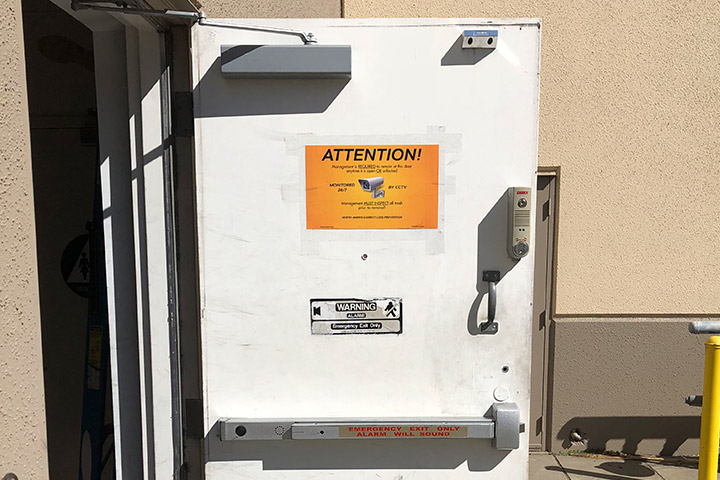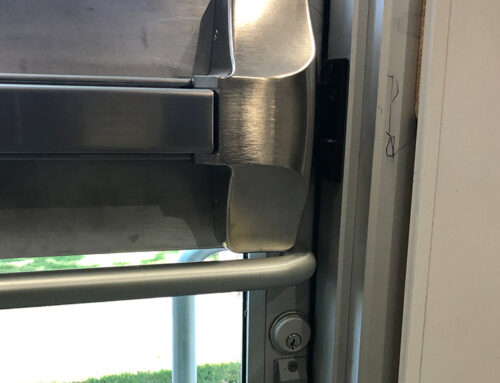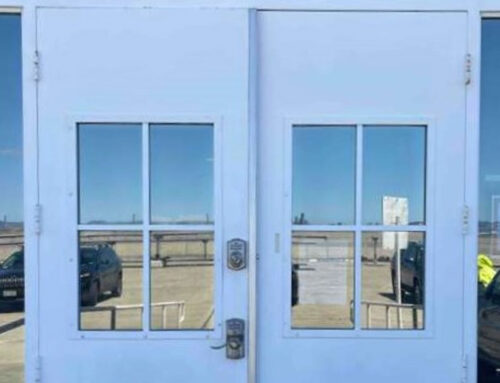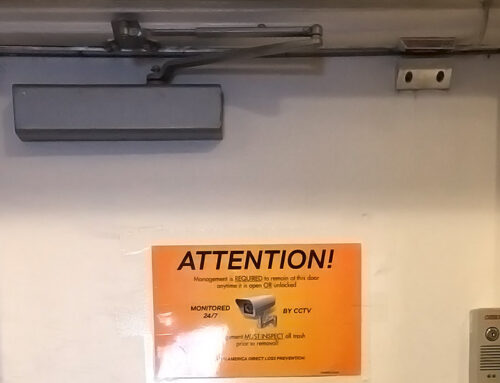It’s hard to understand what your commercial door technician is talking about if you’re not too familiar with the parts of doors. What does your pro mean when he or she says your casing is interfering with the door’s function or the flush bolt needs to be replaced? They should walk you through it, but it is wise to learn a little bit of commercial door terminology to make it easier on yourself. Here are the most common terms you may need to know.
Parts of the Door
These terms describe parts of the door that all, or almost all, doors will have.
- Active and inactive door: In double doors, one door is active and can be moved. The other is inactive and fixed in place for stability.
- Bottom rail: The bottom surface of the door.
- Casing: Also called trim, this is the wood or plastic paneling or molding that connects the doorframe and the wall.
- Core: The innermost part of the door. Doors may have cores made of different materials than their outer facing.
- Hinges: The metal clips on the door that attach it to the building.
- Jamb: The wooden frame that surrounds the door. The hinges are attached to the jamb.
- Transom: Decorative window or piece of wood placed above the door.
- Trim: Wood or plastic that covers the jamb to make it look better.
- Weatherstripping: A narrow strip of metal, rubber, fibers, plastic, or other materials that seals the door against outside air and moisture.
Door Hardware
Door hardware is additions onto doors that your door may, or may not, have. Hardware includes different kinds of locks and handles.
- Astragals: This hardware is for double doors only. It covers the gap between the two doors.
- Butt: A simple kind of hinge.
- Deadbolt: A lock that requires a key.
- Flush bolt: A bolt used on an inactive door. It keeps it stable, so the active door works better.
- Key cylinder: A part of a door lock that engages or disengages the latch.
- Lock bore: A hole that accommodates a cylindrical lockset.
- Multi-point lock: A lock with multiple points of locking, but that is operated by one mechanism.
- Push bar: A bar that allows for the quick opening of the door for emergencies.
- Pull handle: A handle meant to enable pulling the door open.
- Removable mullions: Like astragals, they fill the gap between double doors. However, these are more durable for security and removable for convenience.
Other Useful Commercial Door Terminology
While not parts of the door, these are useful commercial door terms to know:
- ADA: The Americans with Disabilities Act. It has requirements for commercial doors in the United States.
- Caulking: Sealant used on many parts of doors (and other things.)
- Inswing: An exterior door that opens into the building.
- Right hand/left hand: A description of which way the door swings when opening. If the hinge is on the right, it’s right hand, and the same for the left.
- Outswing: A door that swings out to the exit of the building.
- PVC: Polyvinyl chloride, a kind of plastic used in many door parts.







